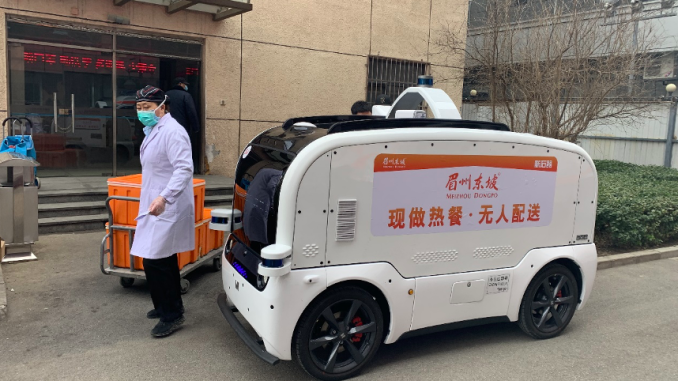
Introduction
Picture a world where cars effortlessly navigate the streets, seamlessly gliding through traffic without a driver at the wheel. It may sound like something out of a science fiction movie, but autonomous vehicles are no longer just a fantasy. They are quickly becoming a reality, transforming our roads and revolutionizing the way we travel.
But with this new era of self-driving cars comes an entirely uncharted territory for insurance companies. How do you insure a vehicle that doesn’t require human control? What risks and liabilities come into play when accidents involve machines rather than people? In this blog post, we will explore the fascinating intersection of autonomous vehicles and insurance, as we navigate the uncharted roads ahead in this rapidly evolving industry. So buckle up and get ready to delve into the exciting realm of insurance for autonomous vehicles!
Self-driving cars for country roads
The adoption of self-driving cars is rapidly expanding, and it’s not just limited to urban areas. Autonomous vehicles are now making their way onto country roads, promising a new level of convenience and safety for rural communities.
Picture this: you’re driving through the picturesque countryside, surrounded by rolling hills and lush greenery. Instead of being behind the wheel, you can sit back and enjoy the scenery as your autonomous vehicle effortlessly navigates the winding roads. With advanced sensors and mapping technology, these self-driving cars can adapt to changing road conditions and safely maneuver through tight turns.
But what about insurance? As self-driving cars become more prevalent on country roads, there are still many questions surrounding how they will be insured. Traditional auto insurance policies may need to evolve to accommodate this emerging technology. Insurers will need to consider factors such as who bears responsibility in case of accidents – the driver or the car manufacturer?
Additionally, with autonomous vehicles expected to reduce accidents significantly due to their advanced safety features, insurers may need to reassess premiums accordingly. This could lead to lower rates for owners of self-driving cars compared to traditional vehicles.
While there are still challenges ahead when it comes to insuring self-driving cars on country roads, it’s clear that this revolutionary technology has the potential not only to transform our daily lives but also reshape the insurance industry as we know it. The future is indeed exciting – with autonomous vehicles paving new paths on both city streets and remote rural areas alike!
The world with self-driving cars and its impact on Insurance
The world with self-driving cars is rapidly approaching, and the impact on insurance will be significant. As these autonomous vehicles become more prevalent on our roads, traditional insurance models will need to adapt to the changing landscape.
One major change we can expect is a shift in liability. With self-driving cars, the responsibility for accidents may no longer rest solely on the driver. Instead, it could fall upon the manufacturers or designers of these vehicles. This raises important questions about who should bear the financial burden when something goes wrong.
Additionally, autonomous vehicles are expected to reduce accident rates significantly. With advanced sensors and algorithms guiding their every move, they have the potential to greatly improve road safety. While this is undoubtedly a positive development for society as a whole, it poses challenges for insurers who rely on premiums from policyholders involved in accidents.
In response to these changes, insurance companies are already exploring new approaches and products specifically tailored for autonomous vehicles. Some insurers are considering usage-based policies that take into account factors such as how often an individual drives manually versus relying on autopilot features.
Furthermore, data collection and analysis will play a crucial role in shaping future insurance offerings for self-driving cars. Insurers will need access to real-time vehicle performance data to accurately assess risk and determine appropriate coverage levels.
As we navigate the uncharted roads ahead with self-driving cars, it’s clear that both insurers and policymakers must work together collaboratively to ensure adequate protection for all parties involved – drivers, passengers, pedestrians – while also encouraging further innovation in this exciting field.
Autonomous vehicles are coming to a street near you. How will we insure them?
As the rapid development of autonomous vehicle technology continues, it’s clear that self-driving cars will soon become a common sight on our roads. But with this shift in transportation comes the need for a new approach to insurance.
Traditional auto insurance policies were designed for human drivers, taking into account factors such as driving history and personal behavior behind the wheel. However, when it comes to self-driving cars, these parameters no longer apply in the same way.
Insurers and regulators face numerous challenges in adapting existing insurance models to fit autonomous vehicles. Questions arise around liability: Who is responsible if an accident occurs? Is it the manufacturer of the vehicle or the software developer? What about situations where both human drivers and self-driving cars share the road?
There is also uncertainty regarding how accidents involving autonomous vehicles should be assessed and compensated. With AI-powered systems making split-second decisions based on complex algorithms, assigning blame becomes a complicated task.
To address these concerns, insurers are exploring new approaches such as usage-based insurance (UBI) or pay-per-mile policies specifically tailored for self-driving cars. UBI uses telematics devices installed in vehicles to track driving behavior like speed, braking patterns, and distance traveled. This data can provide valuable insights into risk assessment and could help determine appropriate premiums for owners of autonomous vehicles.
Furthermore, collaborations between manufacturers and insurers have begun emerging to develop comprehensive coverage plans that encompass both hardware-related risks (such as malfunctions) and software-related risks (like cyber attacks). By working together closely from design stages through deployment phases, they aim to build robust safety measures while ensuring financial protection against potential incidents.
Additionally, governments play a vital role in shaping regulations related to insuring autonomous vehicles effectively. Clear guidelines must be established concerning liability issues so that all parties involved understand their responsibilities clearly within this evolving landscape.